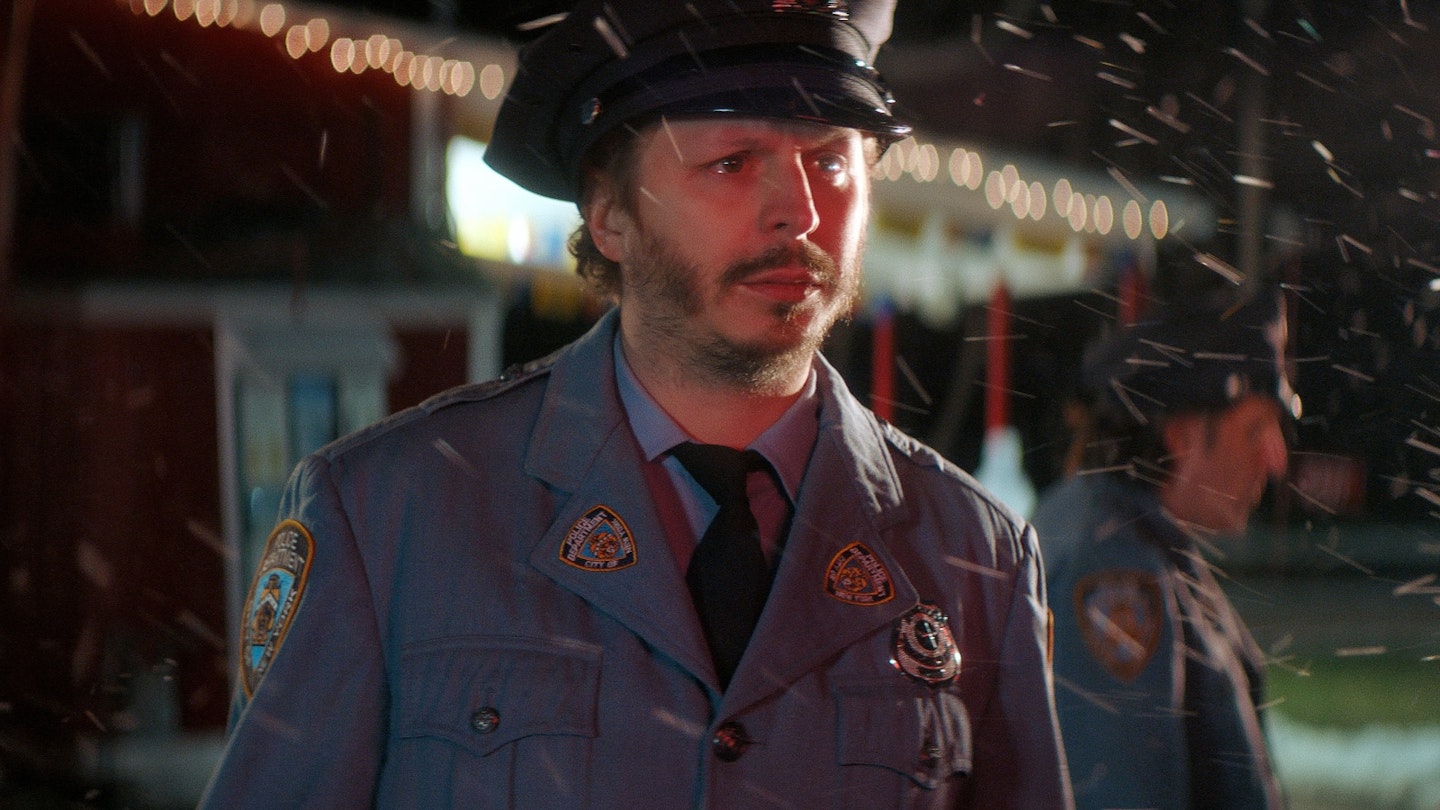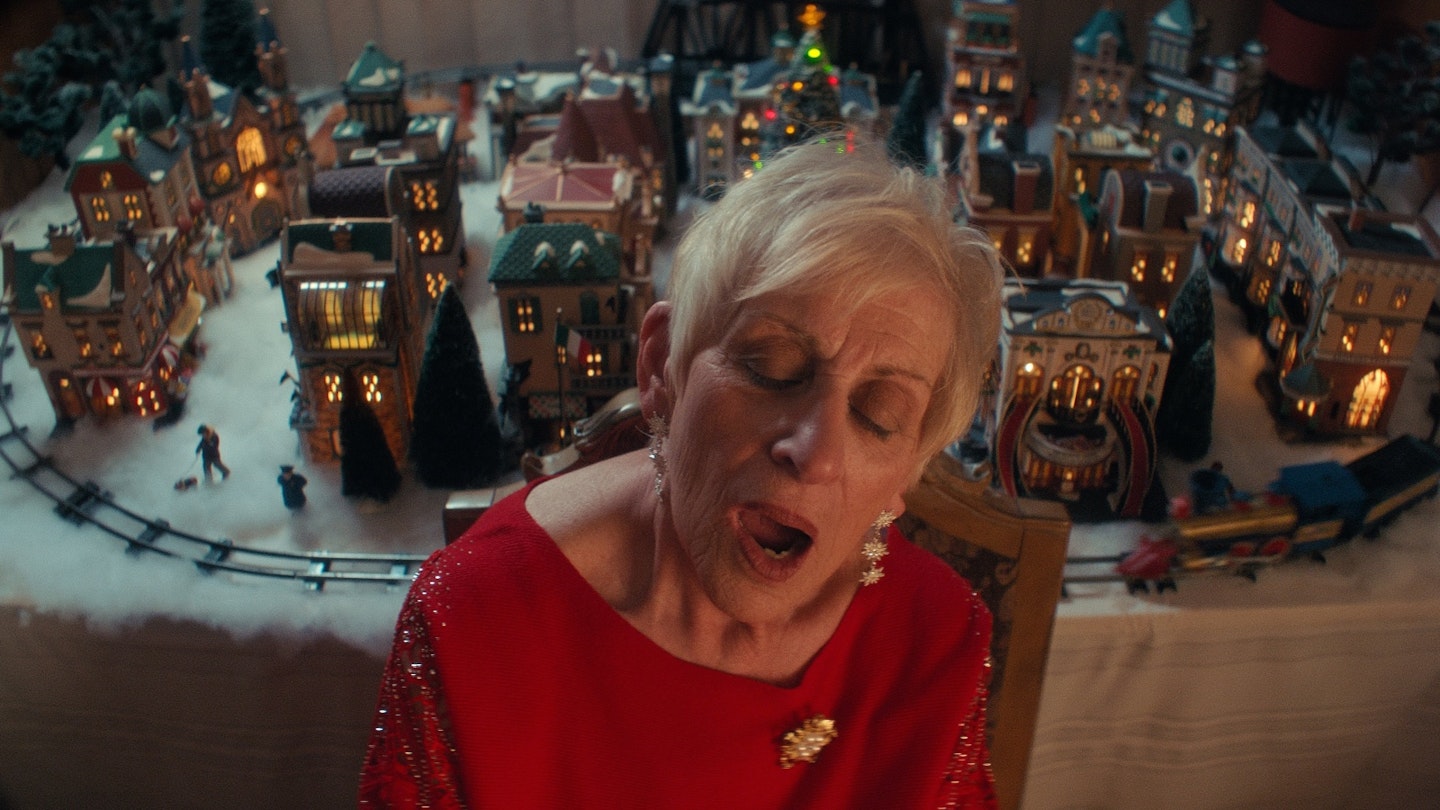Featuring Francesca Scorsese (daughter of Martin) and Sawyer Spielberg (son of Steven), it’s hard not to go into Tyler Taormina’s Christmas Eve In Miller’s Point with curiosity piqued as to what the next generation might have helped to create, beside the point though that might be. Happily, Taormina’s atmospheric film turns out to be a rich slice of retro-styled Americana, replete with the classic movie flourishes of their forebears, from the distant wails of an Amtrak horn, to the precarious picket-fence perfection of a dime-a-dozen suburb.

The set-up is simple. Several generations of the Italian-American Balsano family are heading back to matriarch Antonia’s (Mary Reistetter) home on Long Island to break bread together across one long, eggnog-soaked Christmas Eve. While nominally sharing in the festivities, though, each subset has its own priorities: the little kids, never far from a fractious meltdown, are all about the toys and a lost lizard; the teens (one being Scorsese’s Michelle) are set on escaping the family claustrophobia in favour of contraband liquor and, hopefully, a back-seat fumble or even something more profound. Meanwhile, the young parents are just trying to get through it all, while the fiftysomething siblings at the clan’s centre are facing the disappointments and anxieties that come with middle age (Steve Alleva’s frustrated novelist is a standout), from a sense of time running out to pressing practical worries over what to do about their ominously infirm mother.
It’s wincingly poignant, Taormina finding the weirdness in the banal, the banality of the weird.
Down the road, two cops (one played by Michael Cera, also on producing duties), possibly harbouring an undisclosable mutual tendresse, cruise the near-empty frost-bound streets, looking for trouble; meanwhile, a small gang of listless youths (including Spielberg’s Splint), not long out of high school, skulk in the snowy lanes, seemingly with no ambition and nowhere to go. It’s hard not to read a well of meaning into that.

This plot, such as it is, emerges through snatched conversations as DP Carson Lund’s camera flits from group to group, lingering nosily as characters reveal candid little details about mundane gripes, lost dreams and heartfelt longings that leave the audience to join the dots. It’s an impressionistic approach that will beguile many, even as its freewheeling style and disjointed narrative will frustrate others. Colour, meanwhile, underlines the film’s sense of timelessness – or at least, of being out of time. Nominally, we are sometime in the early 2000s, but the gorgeousness of the hues — reds are crimson, greens are teal, even turquoise — are more suggestive of decades earlier, compounded by frankly the kitschiest Christmas décor you’ve seen in years. It’s a world that’s almost hyper-real, cosily familiar (for British audiences thanks to a childhood of American movies and Coca-Cola Christmases), but also somehow disconcertingly un-real — an act of imagination akin to Richard Curtis’ quintessentially English idyll.
Within this are repeated flashes of unexpected influences that nod to the dark underbelly of the American dream — as well as the classic stylings of a Coppola, or the dark nostalgia of an inverted Spielberg, there are repeated jolting hints of Lynchian oddness, such as the glimpses of a lonely man living nearby, with just a robot vacuum for company. It’s wincingly poignant, Taormina finding the weirdness in the banal, the banality of the weird.
Co-writing with Kevin Anton and fellow Long Islander Eric Berger, Taormina has found in his childhood home an ‘everyplace’, creating not a story in the conventional sense but more a mood-piece comprised of vignettes that, viewed together, create a powerful evocation of the sadness but also moments of pure joy in the transitory state of being alive. Its off-kilter blend of tones won’t be to everyone’s taste, but succumb to its peculiar delights, and it offers a strange kind of Christmas magic.
